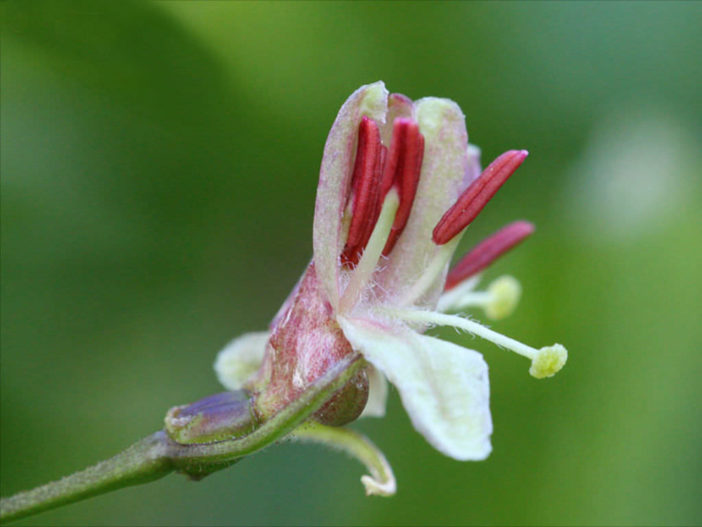Scientific Name
Lonicera alpigena L.
Common Name(s)
Alpine Honeysuckle
Synonym(s)
Caprifolium alpigenum, Caprifolium alpinum, Chamaecerasus alpigena, Euchylia alpigena, Isika alpigena, Isika lucida, Xylosteon alpigenum, Xylosteon alpinum
Scientific Classification
Family: Caprifoliaceae
Genus: Lonicera
Flower
Color: Yellowish
Bloom Time: Summer
Description
Lonicera alpigena is a deciduous shrub that grows up to 6.7 feet (2 m) tall. Leaves are shiny dark green on their upper surface, oval-lanceolate with short stalks with a paler lower surface, and hairy when young. Flowers are small, long-tubed, and yellowish. The bract is often reddish, as are the ovary bracteoles. The flowers usually appear in pairs at the end of a stalk. In late summer, the plant bears conspicuous brilliant red inedible fruits that resemble cherries.

Hardiness
USDA hardiness zone 5a to 9b: from −20 °F (−28.9 °C) to 30 °F (−1.1 °C).
How to Grow and Care
Honeysuckle vines should be planted in cooler climates during spring because their roots thrive when cool and shaded. However, make sure to wait until the final frost before planting them.
When the timing is finally right, locate a spot for planting where they'll get full sun, or at the very least, partial sun exposure. Plant your honeysuckle at a soil depth of 18 inches and lay an organic fertilizer or compost over the top 3 inches.
This type of vine is sensitive to the amount of water and moisture it receives. When you first plant your honeysuckle, the plant will need a considerable amount of water to help it grow. However, when summer arrives, your vine will be more fortified and only need small amounts of water, even during dry spells. Unfortunately, many people mistake watering the plant equally throughout these different stages, a recipe for harmful overwatering in the summer months.
See more at 6 Mistakes to Avoid When Growing Honeysuckle Vine.
Origin
This species is native to mountain forests of Central and Southern Europe.
Links
- Back to genus Lonicera
- Plantpedia: Browse flowering plants by Scientific Name, Common Name, Genus, Family, USDA Hardiness Zone, or Origin
Photo Gallery
Click on a photo to see a larger version.




